Pinggu District is located in the northeast of Beijing, 70 kilometers west of Beijing’s city center and 90 kilometers east of Tianjin’s urban area, serving as a connecting link between these two major cities. It borders Sanhe City of Hebei Province to the south, Miyun District of Beijing to the north, Shunyi District of Beijing to the west, and Jizhou District of Tianjin and Xinglong County of Chengde City, Hebei Province to the southeast and northeast respectively.

Pinggu District is a major agricultural area in Beijing, with agriculture playing a significant role in the region’s economic development. “Pinggu Peach,” “Beizhai Red Apricot,” and “Maoshanhou Buddha’s Joy Pear” have been granted national geographical indication protection. The Sizuolou Walnut Production System has been included in the “China Important Agricultural Heritage Systems.”
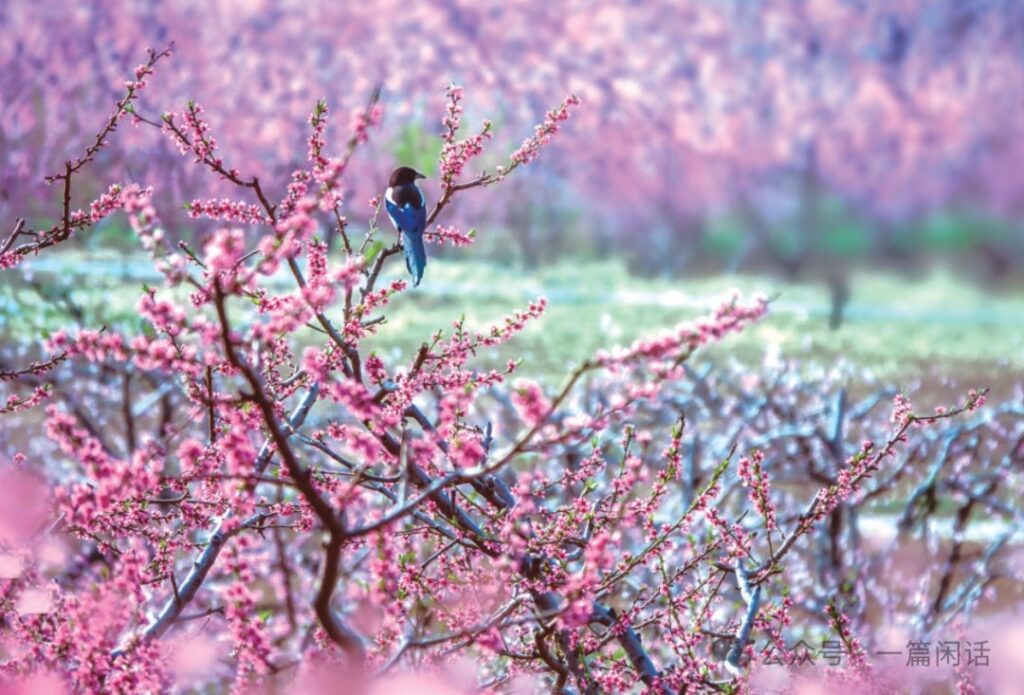
Pinggu District currently has 220,000 mu (about 36,300 acres) of peach orchards. With over 200 varieties of peaches, including white peaches, flat peaches, nectarines, and yellow peaches, Pinggu boasts more than 40 main cultivars.
The district employs both open-field and greenhouse cultivation methods. By combining greenhouse peaches with early, mid, and late-maturing open-field varieties, Pinggu ensures fresh peaches are available from late March to late October, achieving a three-season fresh peach market.
Here are some noteworthy attractions in Pinggu District for your reference:
1.Shilinxia (Stone Forest Gorge)
Shilinxia is located in Huangsongyu Township, Pinggu District, Beijing. It is a national 4A-level scenic area covering 12 square kilometers. The area consists of winding, deep stone forest gorges and four groups of towering stone forest peaks. It derives its name from the steep, erect mountain peaks within the valley that resemble stone forests.
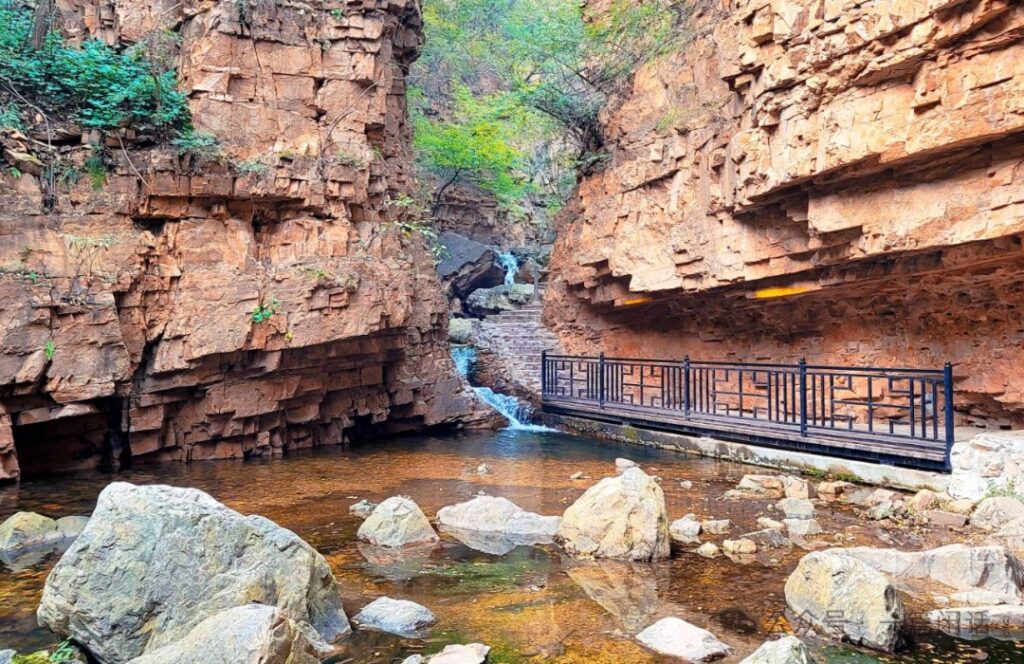
Shilinxia is not only lush with vegetation and tranquil in spirit but also combines the majestic beauty of the north with the delicate charm of the south. The five unique landscapes – gigantic rock formations, deep and dangerous gorges, strings of spiritual pools, waterfalls cascading from the sky, and cliff-hanging cypresses – create an extraordinary experience of wonder, seclusion, wildness, danger, and tranquility.

Famous attractions within the scenic area include Stone Forest Mountain and Xiagu Stone. The glass viewing platform, UFO glass viewing platform, Rainbow Pool, Mirror Maze, and Pet Paradise have made it a popular spot for social media check-ins in Beijing, leading a new trend in tourism development. Additionally, Shilinxia features cultural landscapes such as China’s First Drum, the First Gong of the Olympics, and the First Bell of Ancient and Modern Times, showcasing rich cultural connotations.
2.Jingdong Grand Cavern
Jingdong Grand Cavern is located in the northeast of Pinggu District, Beijing, about a 90-minute drive from Beijing city center. Named “Jingdong Grand Cavern” due to its discovery in the eastern part of Beijing, it is a natural scenic area primarily featuring cave landscapes.
The open area of Jingdong Grand Cavern is approximately 2.5 kilometers long. Inside the cave, there are various formations of stalactites – some resembling floating clouds, others like lotus flowers, giant mushrooms, or rolling curtains – enhanced by beautiful lighting effects.
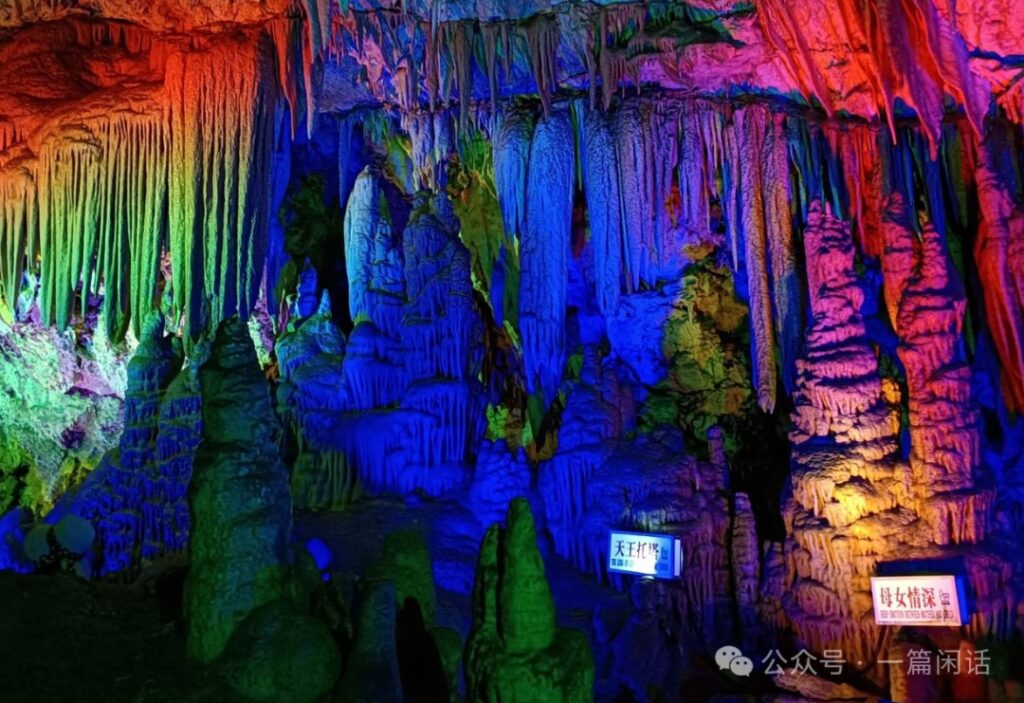
The temperature inside the cave remains around 10-20°C year-round, making it suitable for visiting in all seasons. When touring Jingdong Grand Cavern, visitors are provided with free guided tours explaining the stalactite formations.
A complete tour of the cave on foot takes about 2 hours. Connected to the main cavern is a leisure cave where visitors can drink, enjoy tea, and escape the summer heat. However, this area generally receives poor reviews online as the scenery is not as impressive as the main cave, so it’s not recommended to visit.
3.Jingdong Grand Canyon
The Jingdong Grand Canyon scenic area boasts clear waters and lush mountains surrounded by overlapping peaks, making it an ideal spot for relaxation, exercise, and scenic photography. The area also features exciting attractions such as glass walkways, cable cars, and slides. Summer is the best season to visit Jingdong Grand Canyon, as it provides a cool retreat from the heat. Other seasons can be quite cold.

The typical route for visitors begins with a 3-kilometer walk through the canyon, which offers various scenic spots to explore. At the end of the canyon, visitors can take a cable car to the top of Jingtai Mountain. From the mountain’s observation deck, visitors can enjoy panoramic views of the surrounding mountains. To return, visitors can either take a slide or a sightseeing car directly back to the ticket office, or return to the cable car station and retrace their steps through the canyon. A complete tour of the scenic area takes about 3-4 hours.

At the end of the canyon is the cable car station, which takes visitors to the top of Jingtai Mountain. The mountain top is flat and offers expansive views. Several observation decks allow visitors to admire the spectacular layered mountain scenery. After exploring the mountain top, visitors can descend via slide, sightseeing car, or cable car. Most visitors opt for the slide, which is 4 kilometers long and takes about 15 minutes to descend from the mountain top. This thrilling ride is one of the highlights of the scenic area.
4.Yaji Mountain
Yaji Mountain is located in Pinggu District, northeast Beijing. It gets its name from two large rocks at the summit that resemble the traditional hairstyle of ancient Chinese girls. Yaji Mountain has long been a Taoist sanctuary, with many ancient Taoist temples at the top.
The mountain also features old pine and cypress trees, as well as uniquely shaped boulders. Visitors can enjoy hiking, visiting Taoist temples, and admiring mountain scenery. Compared to other mountain scenic areas, Yaji Mountain is usually less crowded, making it an excellent tourist destination in Pinggu District.
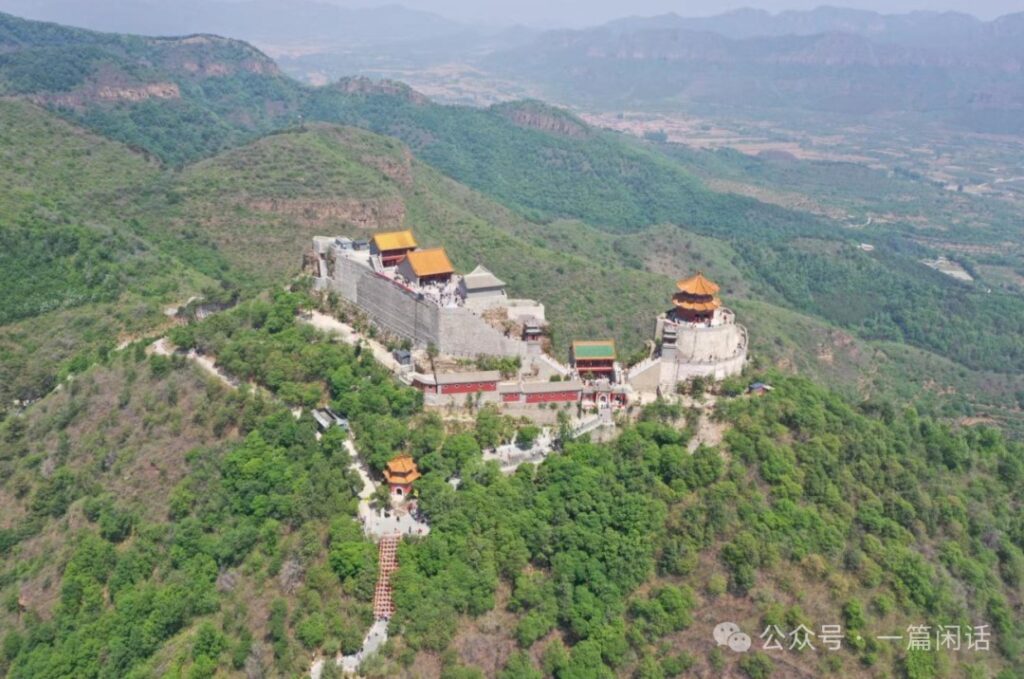
Yaji Mountain is divided into eastern and western peaks. Visitors start climbing from the entrance, first reaching the lower western peak, then proceeding to the eastern peak. The summit is about 300 meters above sea level, and it typically takes half a day to climb the mountain and explore the entire scenic area. Along the climbing route, there are Taoist-themed squares and historical buildings.
Notable structures at the summit include the Bixia Yuanjun Shrine on the western peak, the Jade Emperor Pavilion on the eastern peak, and the Three Emperors Hall between the two peaks. These buildings, constructed on steep mountain slopes, are quite spectacular. Visitors can tour the buildings or pay respects at the Taoist temples.

Every April, Yaji Mountain hosts a grand temple fair, one of the most famous in North China. It’s a lively event that’s well worth attending.
5.Tianyun Mountain
Tianyun Mountain Tourist Scenic Area is located in Huangtuling, Huangsongyu Township, Pinggu District, Beijing, 10 kilometers from Jingdong Grand Cavern. The area features overlapping peaks, bizarre rocks, dense forests, and bird songs echoing through empty valleys. It combines the spirituality of flowing springs and waterfalls with the romance of ancient vines and wildflowers. The mountain peaks are uniquely beautiful, like a poem or painting, showcasing nature’s incredible craftsmanship. It’s often referred to as the “Zhangjiajie of the North” due to its magical scenery.
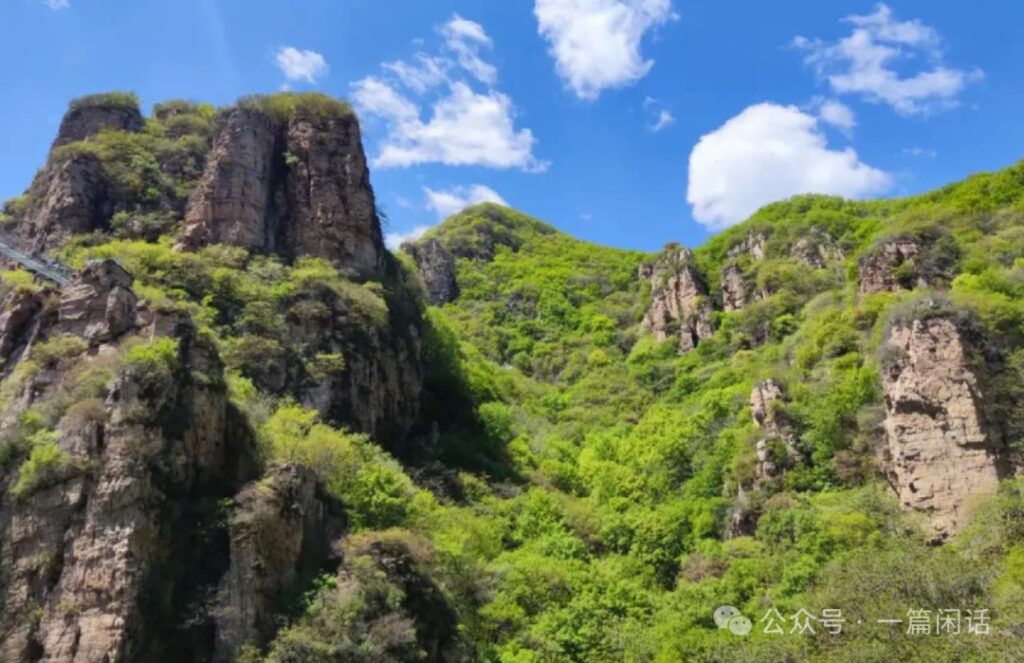
Within the scenic area, Cuiping Peak, Lotus Peak, Four Maidens Mountain, and Yuping Peak rise straight into the clouds, combining the majestic grandeur of northern mountains with the beautiful and steep charm of southern landscapes. Visitors can hike or take a cable car to the main peak, Lotus Peak.
From there, looking south, one can see a stone sea resembling a map of China; looking north, countless gullies and valleys come into view, making visitors marvel at the thrilling walkways on steep cliffs. To the west, the magnificent ancient Great Wall and beacon towers wind along Tiger Ridge; to the east, the inspiring view of surrounding mountains evokes the poetic sentiment of “reaching the summit to find all other mountains small.”
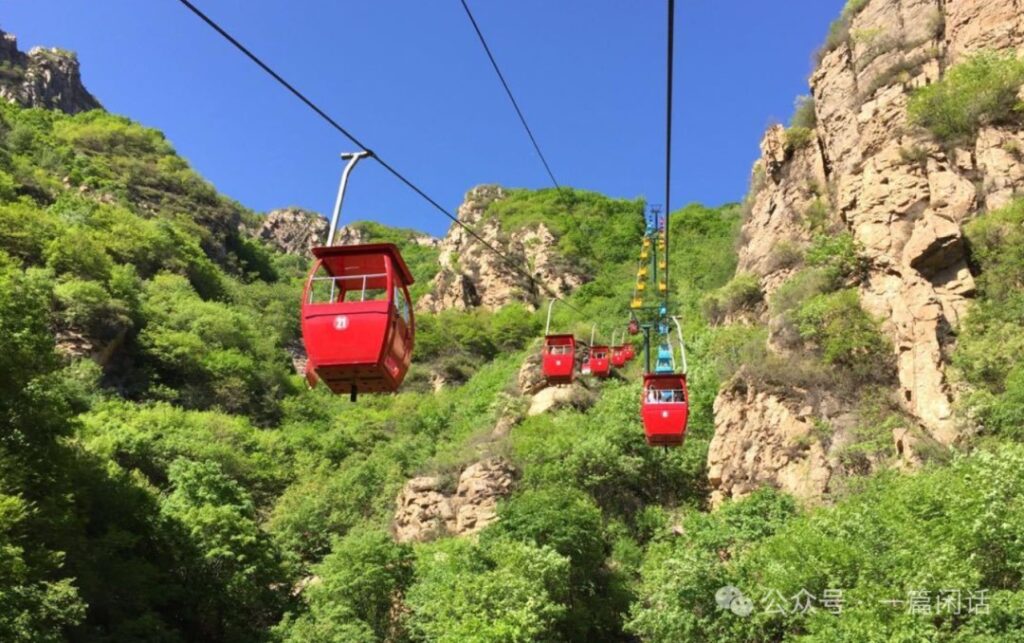
Tianyun Mountain Scenic Area has dense vegetation, including rare wild birch forests and mountainsides covered in rhododendrons, both uncommon in the Beijing area. Valleys are shrouded in white clouds, with babbling streams, blooming wildflowers, and birdsong. Even during the hottest days of summer, the Cold Wind Valley (Cold Slope) maintains a temperature of only 2°C. Visitors can enjoy a leisurely trip in this natural oxygen bar, escaping the summer heat and enjoying the cool air.
6.Jiangjunguan Great Wall
Jiangjunguan is located about 40 kilometers northeast of Pinggu District, Beijing, on the Ming Great Wall line. It marks the eastern end of the Great Wall within Beijing’s boundaries. To its southeast is Huangyaguan, and to its northwest is Qiangzilu Pass, making it militarily significant as an important pass in the northeast of Pinggu. A small village below Jiangjunguan is also named Jiangjunguan Village because of this.

The Jiangjunguan section of the Great Wall was originally built with stone blocks during the Northern Qi Dynasty and rebuilt during the Ming Dynasty with the addition of beacon towers. It is the only remaining stone-built Great Wall in Beijing. The eastern part of the wall at the pass still stands today, with a enemy tower called Zhengbei Tower. The wall of the Jiangjunguan section has been restored and is now relatively flat on top. Standing on the wall, visitors can overlook the surrounding beautiful scenery and gaze at the distant green mountains.
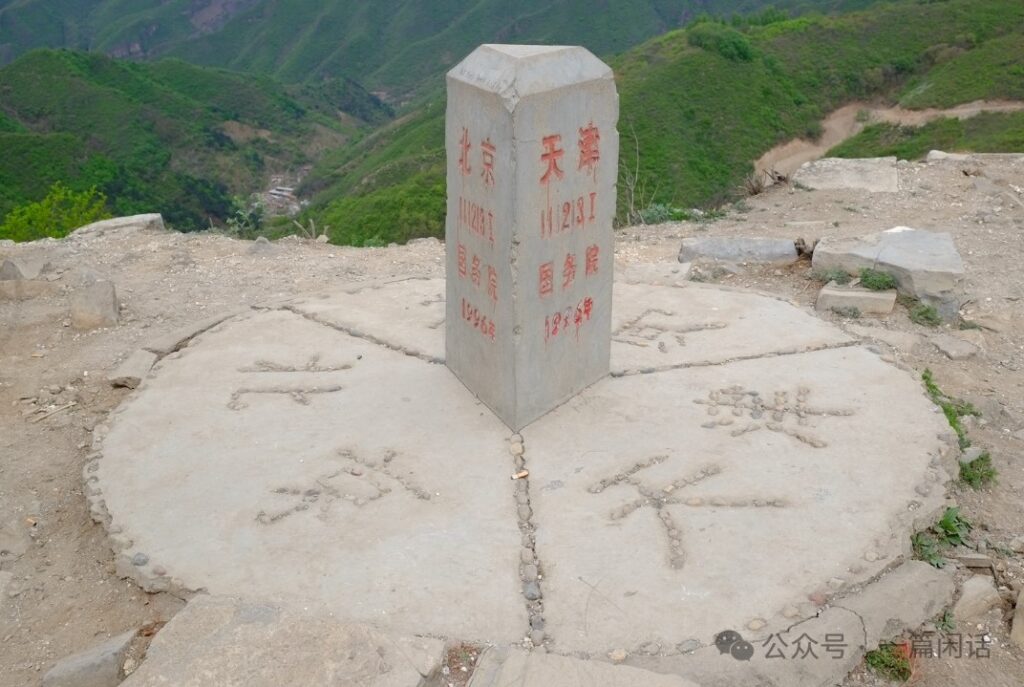
If you’re particularly interested in Great Wall relics, you can start from Jiangjunguan and embark on an ancient Great Wall exploration journey. Following the route of Jiangjunguan – Hongshimen – Boli Tai – Sizuolou – Beizhai, you’ll encounter many Great Wall relics, including pass ruins, enemy towers, and beacon tower sites.
7.Old Elephant Peak Scenic Area
The Old Elephant Peak Scenic Area is named after a huge peak within the valley that resembles a giant elephant. The elephant’s head faces west, its tail east, with a body length of over 80 meters and a height of more than 50 meters. It looks like an old elephant lowering its head and trunk to drink water. Every part of its body, legs, head, tail, trunk, and eyes are vividly represented. Even more remarkably, when viewed from a different angle, it appears as two conjoined mother-and-child elephants.
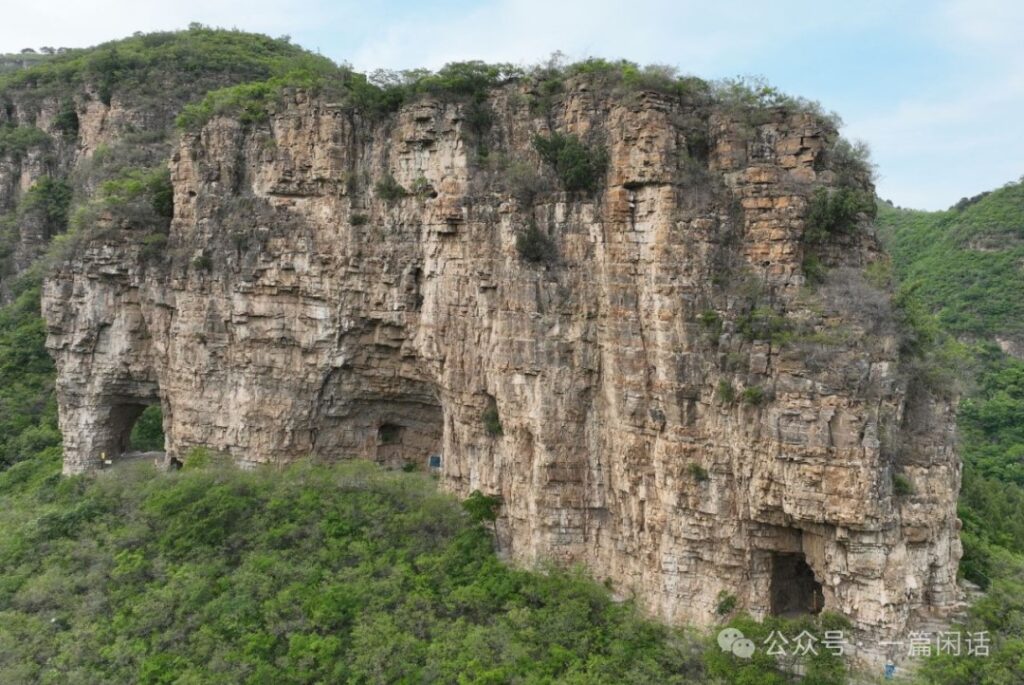
The Old Elephant Peak area is ecologically pristine with rustic scenery, showcasing natural wilderness at every turn. The unique natural landscapes and geological phenomena found here are rare in other regions. The scenic area features winding canyons, majestic mountains, deep valleys, dense forests, lush vegetation, and abundant resources.
Within the area, there are over 20 scenic spots, including the naturally formed elephant, ancient castle clouds, chrysanthemum fairy valley, and couple’s poetry recital. In summer, the layered mountains are lush and green, offering a refreshing escape from the heat. Climbing to high vantage points provides breathtaking views that captivate visitors.

8.Beijing Thousand Buddha Cliff Scenic Area
The Beijing Thousand Buddha Cliff Scenic Area is the only stone-carved Buddha statue group in North China, featuring over a thousand relief sculptures of Buddha in various poses. Its natural scenery and cultural landscapes complement each other beautifully. The UNESCO ecological survey team has praised it as the “Zhangjiajie of the North.”
The scenic area is densely forested with a coverage rate of 85%, dotted with wildflowers that transform the green mountains into poetry. Streams flow continuously, sometimes gently meandering through emerald valleys, sometimes rushing down steep cliffs, creating a natural symphony of mountain streams. Occasional bird calls add a touch of spirituality to the quiet valleys.

The peaks within the Thousand Buddha Cliff Scenic Area take on various shapes: some resemble Guanyin Bodhisattva, others look like the big-bellied Maitreya, some appear like a divine bow ready to shoot an arrow, and others like ascetics ascending to heaven after attaining enlightenment. The group of peaks is jade-like and lifelike.
The cliff, discovered by chance by local villagers, features about a thousand relief and line-carved Buddha statues in various poses. Buddhist terms are also carved on the cliff rocks and stone walls, giving the scenic area its name.
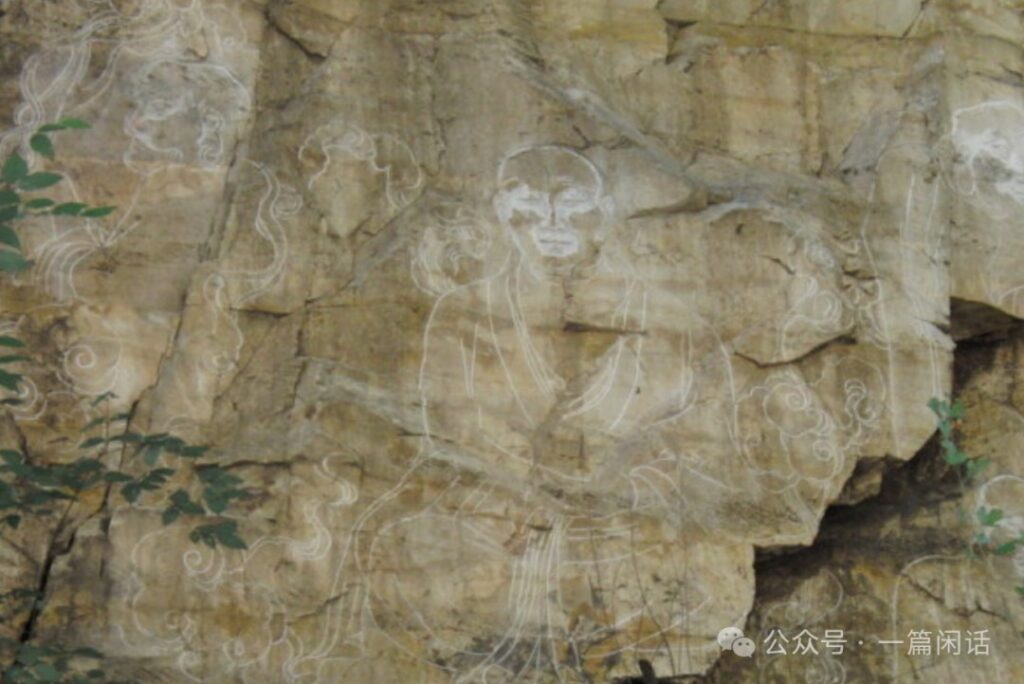
9.Three Sheep Ancient Volcano Scenic Area
The Beijing Three Sheep Ancient Volcano Scenic Area is located 19 kilometers northeast of Pinggu District, in Xiong’er Zhai Township, south of Huayu Village. Covering an area of over 10 square kilometers, it preserves numerous volcanic remnants from an eruption 1.5 billion years ago. The types of volcanic features are diverse and well-preserved, making it a precious and valuable ancient volcanic resource in the Beijing area, with significant observational and educational value. It is one of the oldest volcanoes in Beijing and even in the entire country.
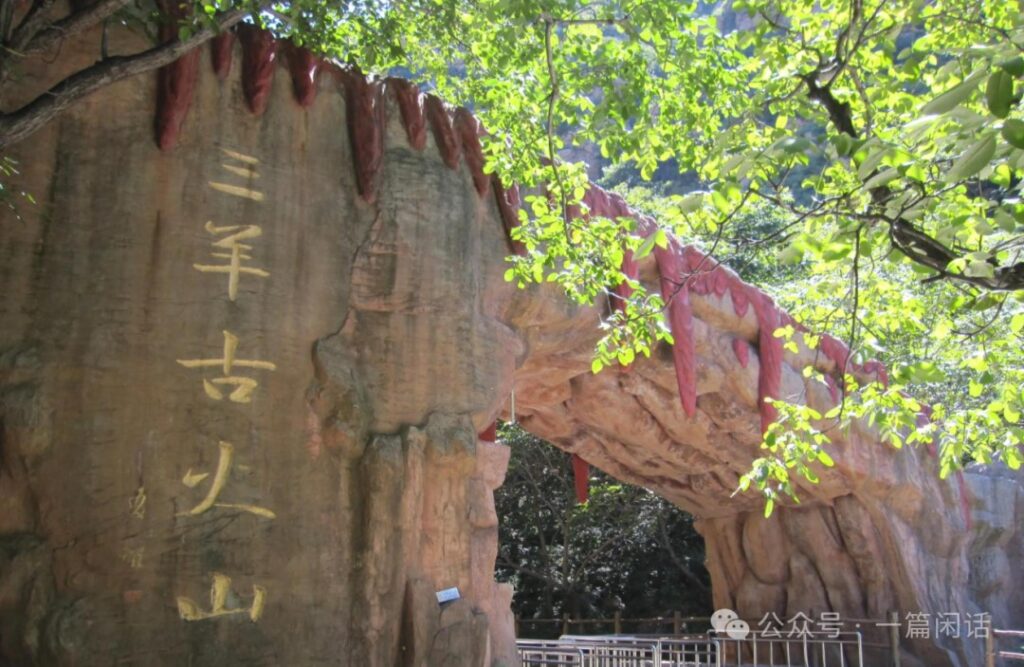
The volcanic eruption caused crustal movements, forming multiple large and small rift valleys, canyons, and gorges in the Three Sheep Ancient Volcano area, showcasing numerous bizarre rock formations and cliff landscapes. Due to the fertile volcanic ash, the soil in the area is rich, with vegetation coverage reaching over 90% and forest coverage over 60%. Fruits and other agricultural products grown in the volcanic area are highly popular. The volcanic red fruit even enjoys the reputation of being the “best in Eastern Beijing.”
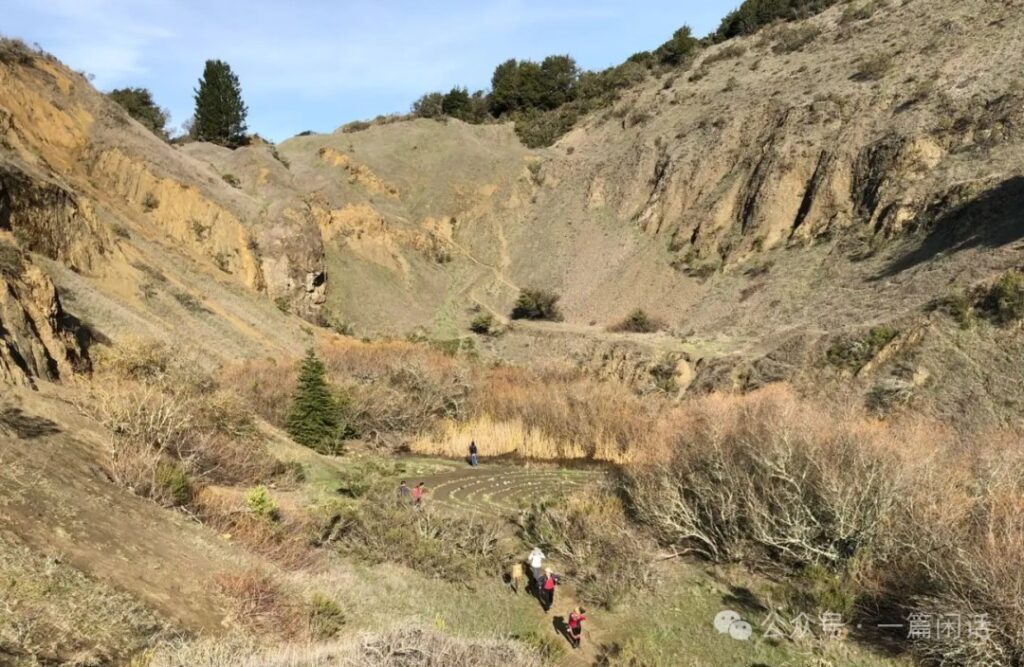
The scenery here is picturesque, with small views every five steps and grand views every ten steps. It contains rich natural landscapes, including very vivid formations such as the Wishing Turtle, Mountain Guardian Beast, and Ancestral Ape Peak. The “quartz sandstone” here is said to be 1.8 billion years old, having witnessed biological evolution and human origins over the long course of time.
10.Lishu Gou Leisure Town
Lishu Gou Leisure Town is located in Huangsongyu Township in the northern part of Pinggu District, Beijing. Situated at the foot of the Yanshan Mountains, it covers a total area of 9.16 square kilometers. The area features continuous mountain ranges with steep terrain, reaching altitudes of over a thousand meters. Among the peaks, valleys crisscross, winding and deep, with a ten-mile pear blossom avenue running through.
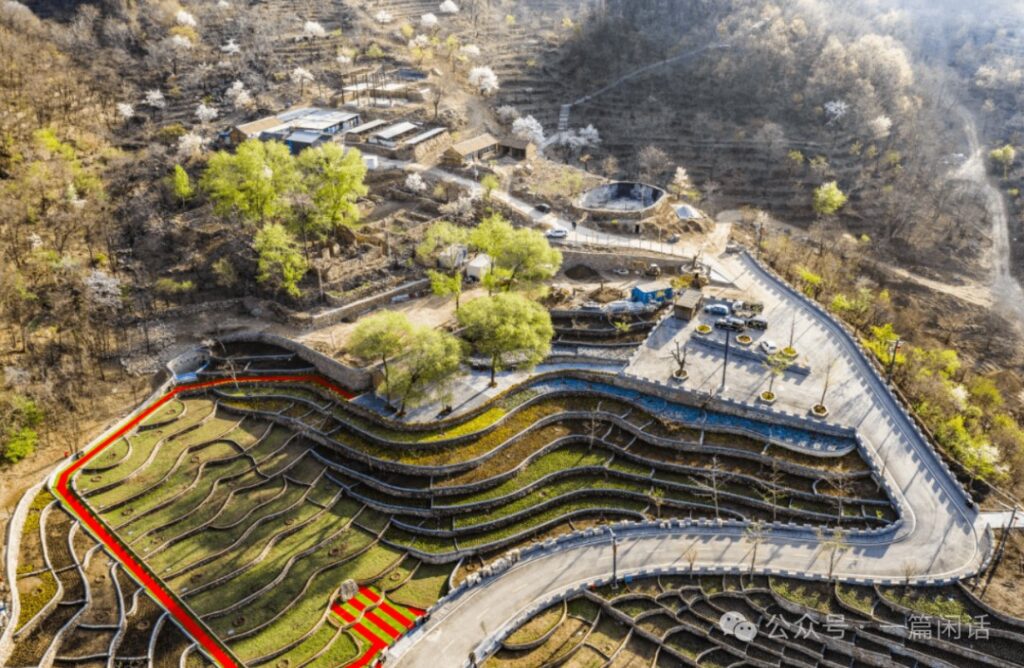
In Chestnut Valley, following the clear spring upwards, you’ll find enormous ancient chestnut trees, thick and towering, some so large that several people can’t encircle them with their arms. They are believed to be hundreds or even thousands of years old, their exact age unknown. The Ice World takes advantage of the high altitude, low temperatures, and valley features to create icicles, ice sculptures, and amber ice formations containing real flowers, real wood, and lifelike frozen animals, resulting in unique and novel sights that leave visitors in awe.

In this town, visitors can not only admire these wonders but also experience them firsthand. The mountain slide features a 2,500-meter track that allows visitors to slide down, feeling exhilarated as the wind rushes past. There are also parent-child boating activities and fishing in muddy waters. In winter, a 10,000-square-meter lake surface freezes to a thickness of 50 centimeters, allowing visitors to enjoy ice skating and ice car rides.
Further Reading:




